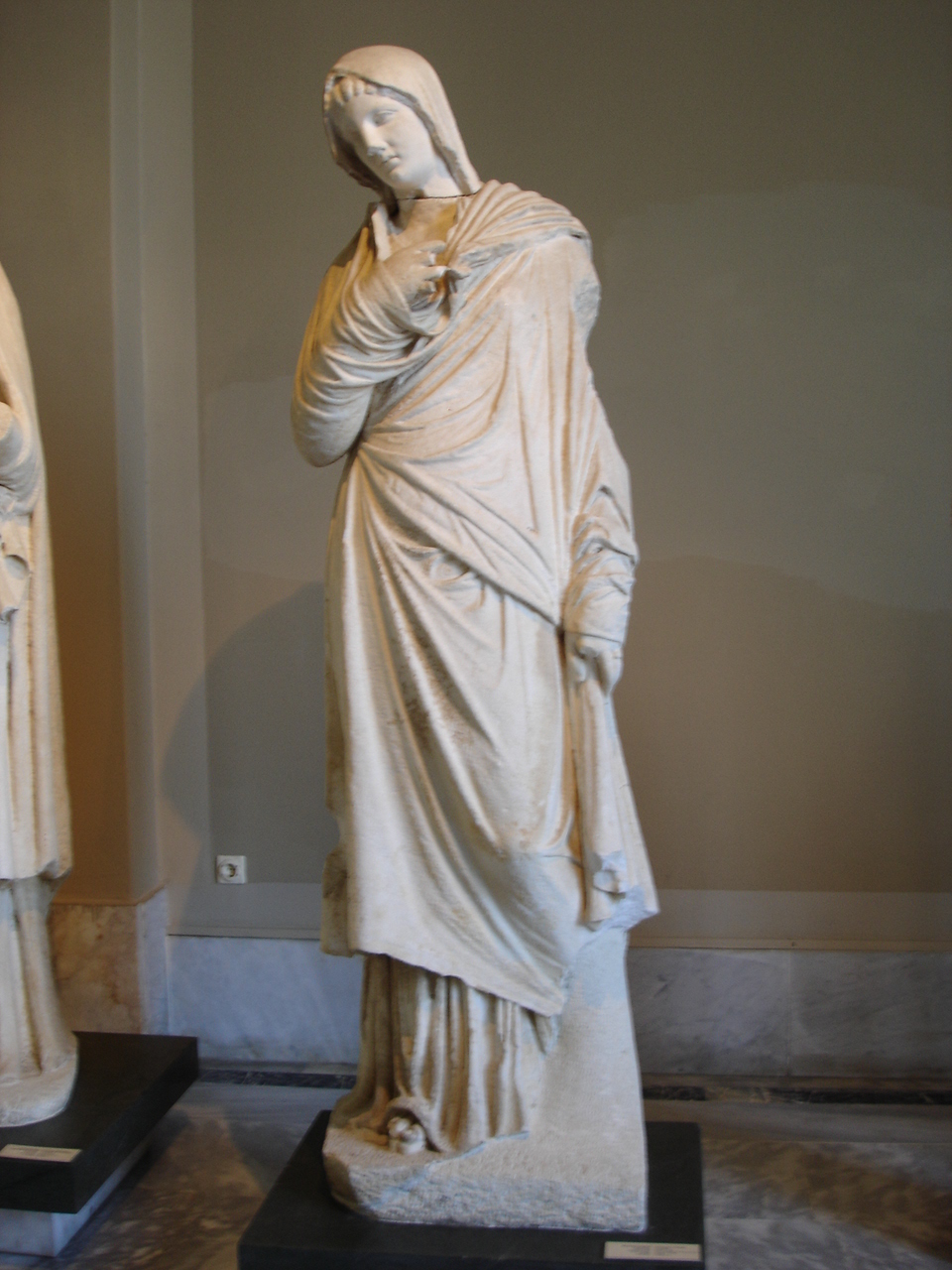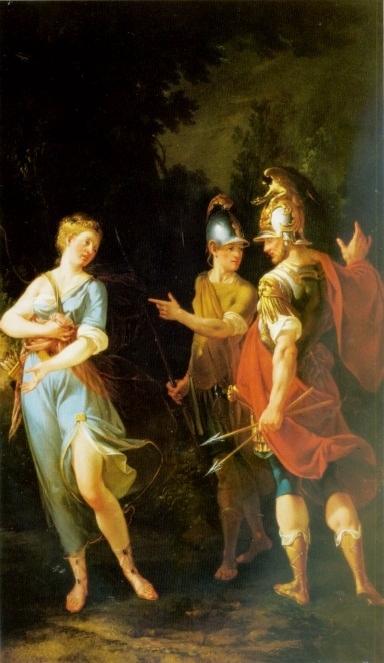|
Disciplina
In Roman mythology, Disciplina was a minor deity and the personification of discipline. The word ''disciplina'' itself, a Latin noun, is multi-faceted in meaning; it refers to education and training, self-control and determination, knowledge in a field of study, and an orderly way of life. Being disciplined in duties is to give example of what is taught, a Roman believes that what is taught is possible and learn from honored example best. The goddess embodied these qualities for her worshippers. She was commonly worshipped by imperial Roman soldiers, particularly those who lived along the borders of the Roman Empire; altars to her have been found in Great Britain and North Africa. The fort of Cilurnum along Hadrian's Wall was dedicated to the goddess Disciplina, as witnessed by an extant dedicatory inscription on a stone altar found in 1978. [...More Info...] [...Related Items...] OR: [Wikipedia] [Google] [Baidu] |
Discipline
Discipline refers to rule following behavior, to regulate, order, control and authority. It may also refer to punishment. Discipline is used to create habits, routines, and automatic mechanisms such as blind obedience. It may be inflicted on others or on oneself. Self discipline refers to the practice of self restraint, controlling one's emotions, and ignoring impulses. History Disciplinarians have been involved in many societies throughout history. The Victorian era resulted in the popular use of disciplinarian governance over children. Edward VIII had a disciplinarian father, and the English had modeled the royal families during this era. Edward's grandmother was Queen Victoria who had championed the role of the family unit during her reign. Disciplinarians will enforce a stricter set of rules that are aimed at developing children according to theories of order and discipline. Disciplinarians have also been linked to child abuse in numerous cases and biographies. Self-disci ... [...More Info...] [...Related Items...] OR: [Wikipedia] [Google] [Baidu] |
Cilurnum
Cilurnum or Cilurvum was a fort on Hadrian's Wall mentioned in the ''Notitia Dignitatum''. It is now identified with the fort found at Chesters (also known as Walwick Chesters to distinguish it from other sites named Chesters in the vicinity) near the village of Walwick, Northumberland, England. It was built in 123 AD, just after the wall's completion. Cilurnum is considered to be the best preserved Roman cavalry fort along Hadrian's Wall. The site is now preserved by English Heritage as Chesters Roman Fort. There is a museum on the site, housing finds from the fort and elsewhere along the wall. Construction The site guarded a bridge, Chesters Bridge, carrying the Military Way Roman road behind the wall across the River North Tyne. Massive abutments survive of this bridge across the river from the fort. Cilurnum was a cavalry fort at its foundation, for retaliatory raids into barbarian areas north of the wall, then given over to infantry later. Hadrian himself encouraged ... [...More Info...] [...Related Items...] OR: [Wikipedia] [Google] [Baidu] |
Roman Goddesses
The Roman deities most widely known today are those the Romans identified with Greek counterparts (see '' interpretatio graeca''), integrating Greek myths, iconography, and sometimes religious practices into Roman culture, including Latin literature, Roman art, and religious life as it was experienced throughout the Empire. Many of the Romans' own gods remain obscure, known only by name and sometimes function, through inscriptions and texts that are often fragmentary. This is particularly true of those gods belonging to the archaic religion of the Romans dating back to the era of kings, the so-called "religion of Numa", which was perpetuated or revived over the centuries. Some archaic deities have Italic or Etruscan counterparts, as identified both by ancient sources and by modern scholars. Throughout the Empire, the deities of peoples in the provinces were given new theological interpretations in light of functions or attributes they shared with Roman deities. An exten ... [...More Info...] [...Related Items...] OR: [Wikipedia] [Google] [Baidu] |
Education
Education is a purposeful activity directed at achieving certain aims, such as transmitting knowledge or fostering skills and character traits. These aims may include the development of understanding, rationality, kindness, and honesty. Various researchers emphasize the role of critical thinking in order to distinguish education from indoctrination. Some theorists require that education results in an improvement of the student while others prefer a value-neutral definition of the term. In a slightly different sense, education may also refer, not to the process, but to the product of this process: the mental states and dispositions possessed by educated people. Education originated as the transmission of cultural heritage from one generation to the next. Today, educational goals increasingly encompass new ideas such as the liberation of learners, skills needed for modern society, empathy, and complex vocational skills. Types of education are commonly divided int ... [...More Info...] [...Related Items...] OR: [Wikipedia] [Google] [Baidu] |
Pudicitia
Pudicitia ("modesty" or "sexual virtue") was a central concept in ancient Roman sexual ethics. The word is derived from the more general ''pudor'', the sense of shame that regulated an individual's behavior as socially acceptable. ''Pudicitia'' was most often a defining characteristic of women, but men who failed to conform to masculine sexual norms were said to exhibit feminizing ''impudicitia'', sexual shamelessness. The virtue was personified by the Roman goddess Pudicitia, whose Greek equivalent was Aidos. As virtue Romans, both men and women, were expected to uphold the virtue of ''pudicitia'', a complex ideal that was explored by many ancient writers, including Livy, Valerius Maximus, Cicero, Tacitus and Tertullian. Livy describes the legendary figure of Lucretia as the epitome of ''pudicitia''. She is loyal to her husband and is modest, despite her incredible beauty. Some say that the story of Lucretia shows that the more virtuous a woman was, the more appealing she ... [...More Info...] [...Related Items...] OR: [Wikipedia] [Google] [Baidu] |
Justitia
Lady Justice ( la, Iustitia) is an allegorical personification of the moral force in judicial systems. Her attributes are scales, a sword and sometimes a blindfold. She often appears as a pair with Prudentia. Lady Justice originates from the personification of Justice in Ancient Roman art known as ''Iustitia'' or ''Justitia'', who is equivalent to the Greek goddess Dike. The goddess Justitia The origin of Lady Justice was Justitia (or Iustitia), the goddess of Justice within Roman mythology. Justitia was introduced by emperor Augustus, and was thus not a very old deity in the Roman pantheon. Justice was one of the virtues celebrated by emperor Augustus in his '' clipeus virtutis'', and a temple of Iustitia was established in Rome by emperor Tiberius. Iustitia became a symbol for the virtue of justice with which every emperor wished to associate his regime; emperor Vespasian minted coins with the image of the goddess seated on a throne called ''Iustitia Augusta'', and many ... [...More Info...] [...Related Items...] OR: [Wikipedia] [Google] [Baidu] |
Gravitas
''Gravitas'' () was one of the ancient Roman virtues that denoted "seriousness". It is also translated variously as weight, dignity, and importance and connotes restraint and moral rigor. It also conveys a sense of responsibility and commitment to the task. Along with '' pietas'' (regard for discipline and authority), ''severitas'', ''gloria'', ''simplicitas'' (lucidity), ''integritas'', '' dignitas'', and ''virtus'', gravitas was particularly appreciated as an ideal characteristic in leaders. ''Gravitas'' and ''virtus'' are considered more canonical virtues than the others. Roman concept ''Gravitas'' was one of the virtues that allowed citizens, particularly statesmen, to embody the concept of ''romanitas'', which denotes what it meant to be Roman and how Romans regarded themselves, eventually evolving into a national character. Many Roman philosophers praised ''constantia'' (perseverance, endurance, and courage), ''dignitas'' and ''gravitas'' as the most important virtues; ... [...More Info...] [...Related Items...] OR: [Wikipedia] [Google] [Baidu] |
Clementia
In Roman mythology, Clementia was the goddess of clemency, leniency, mercy, forgiveness, penance, redemption, absolution, acquittal and salvation. She was defined as a celebrated virtue of Julius Caesar, who was famed for his forbearance, especially following Caesar's civil war with Pompey from 49 BC. In 44 BC, a temple was consecrated to her by the Roman Senate, possibly at Caesar's instigation as Caesar was keen to demonstrate that he had this virtue. In a letter to his friend Atticus, Cicero is discussing Caesar's ''clementia'': "You will say they are frightened. I dare say they are, but I'll be bound they're more frightened of Pompey than of Caesar. They are delighted with his artful clemency and fear the other's wrath." Again in ''Pro rege Deiotaro'' (For King Deiotarus) Cicero discusses Caesar's virtue of ''clementia''. There is not much information surrounding Clementia's cult; it would seem that she was merely an abstraction of a particular virtue, one that was re ... [...More Info...] [...Related Items...] OR: [Wikipedia] [Google] [Baidu] |
Energy
In physics, energy (from Ancient Greek: ἐνέργεια, ''enérgeia'', “activity”) is the quantitative property that is transferred to a body or to a physical system, recognizable in the performance of work and in the form of heat and light. Energy is a conserved quantity—the law of conservation of energy states that energy can be converted in form, but not created or destroyed. The unit of measurement for energy in the International System of Units (SI) is the joule (J). Common forms of energy include the kinetic energy of a moving object, the potential energy stored by an object (for instance due to its position in a field), the elastic energy stored in a solid object, chemical energy associated with chemical reactions, the radiant energy carried by electromagnetic radiation, and the internal energy contained within a thermodynamic system. All living organisms constantly take in and release energy. Due to mass–energy equivalence, any object th ... [...More Info...] [...Related Items...] OR: [Wikipedia] [Google] [Baidu] |
Money
Money is any item or verifiable record that is generally accepted as payment for goods and services and repayment of debts, such as taxes, in a particular country or socio-economic context. The primary functions which distinguish money are as a medium of exchange, a unit of account, a store of value and sometimes, a standard of deferred payment. Money was historically an Emergence#Economics, emergent market phenomenon that possess intrinsic value as a Commodity money, commodity; nearly all contemporary money systems are based on unbacked fiat money without use value. Its value is consequently derived by social convention, having been declared by a government or regulatory entity to be legal tender; that is, it must be accepted as a form of payment within the boundaries of the country, for "all debts, public and private", in the case of the United States dollar. Contexts which erode public confidence, such as the circulation of counterfeit money or domestic hyperinflation, can ... [...More Info...] [...Related Items...] OR: [Wikipedia] [Google] [Baidu] |
Semper Fidelis
''Semper fidelis'' () is a Latin phrase that means "always faithful" or "always loyal" (Fidelis or Fidelity). It is the motto of the United States Marine Corps, usually shortened to Semper Fi. It is also in use as a motto for towns, families, schools, and other military units. It is thought that it originated from the phrase that the senators of ancient Rome declaimed at the end of their intervention. The earliest definitively recorded use of ''semper fidelis'' is as the motto of the French town of Abbeville since 1369. It has also been used by other towns, and is recorded as the motto of various European families since the 16th century, and possibly since the 13th century or earlier. Records show many families in England, France and Ireland using this motto. The earliest recorded use of ''semper fidelis'' by a military unit is by the Duke of Beaufort's Regiment of Foot, raised in south-western England in 1685. This is apparently linked to its use as a motto by the city of E ... [...More Info...] [...Related Items...] OR: [Wikipedia] [Google] [Baidu] |







